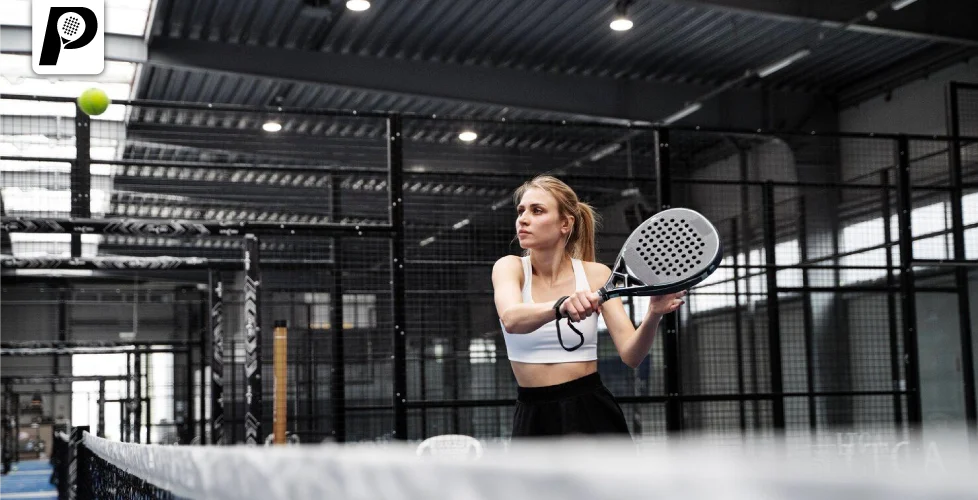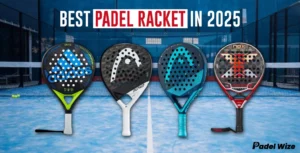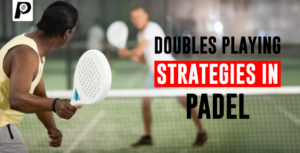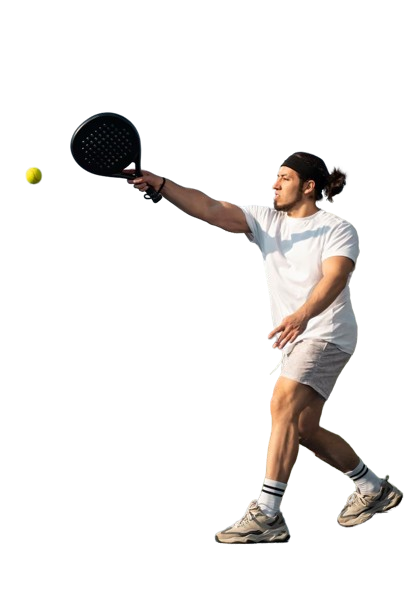Padel, a popular racket sport combining elements of tennis and squash, is known for its fast-paced and dynamic gameplay. Whether you’re a beginner or an experienced player, it’s easy to make mistakes that can hinder your performance and enjoyment of the game. In this blog, we’ll explore How to Play Padel? and some of the most common mistakes players make in padel and provide tips on how to avoid them. By recognizing and correcting these errors, you can improve your game and enjoy padel to its fullest.
Related blog Padel Rules and Regulations: How to Play Like a Pro
1. Incorrect Grip
A common issue for many padel players is using an incorrect grip, which can severely impact their control and precision. The right grip is fundamental to executing accurate and powerful shots, and mastering it is crucial for overall performance in the game.
The Mistake:
One of the most fundamental mistakes players make is using an incorrect grip. A faulty grip can lead to mishits, lack of control, and even injury.
How to Avoid It:
The most commonly recommended grip in padel is the continental grip. To achieve this grip, hold the racket as if you were shaking hands with it. Your index knuckle and heel pad should align with the third bevel of the racket handle. Practice holding and swinging the racket with this grip until it feels natural. This grip allows for versatility in shots and helps maintain control.
Related blog What is Padel Sport? Key Facts and Tips for New Players
2. Poor Footwork
In padel, good footwork is crucial for maintaining proper positioning and executing accurate shots. Poor footwork, however, can leave players out of position and unable to respond effectively to the ball, often leading to missed opportunities and weak returns.
The Mistake:
Poor footwork can lead to being out of position, resulting in missed shots or weak returns. It’s a common issue, especially among beginners who might not yet have developed the necessary agility and awareness.
How to Avoid It:
Focus on staying on the balls of your feet and maintaining an athletic stance. Always be ready to move in any direction. Work on your lateral movement, quick steps, and proper positioning. Remember, it’s crucial to position yourself correctly before hitting the ball. Regularly practicing footwork drills can help improve your agility and positioning on the court.
Related blog How Nox Padel Innovates in Padel Equipment and Apparel
3. Overhitting the Ball
Overhitting the Ball is a common pitfall for many padel players, especially those with a background in more power-focused sports like tennis. This mistake often leads to the ball sailing out of bounds or failing to hit the target with precision.
The Mistake:
Many players, particularly those transitioning from tennis, tend to overhit the ball in padel. This often results in the ball going out of bounds or hitting the walls at an unintended angle.
How to Avoid It:
Padel requires more control and precision than power. Focus on controlled swings and aim for accuracy rather than trying to hit the ball too hard. Soft hands and a relaxed grip can help you achieve better control. Practice hitting the ball at different speeds and angles to develop a feel for the right amount of force needed for each shot.
Related blog How to Improve Your Game with the Right Padel Racquet
4. Neglecting the Walls
Neglecting the walls is a common oversight among padel players, especially those new to the game. The unique aspect of padel courts, with their surrounding walls, requires players to develop skills in both using the walls for strategic play and defending against wall shots.
The Mistake:
Some players, especially those new to padel, neglect to use the walls effectively. They either avoid hitting the ball off the walls or are unsure how to defend against wall shots.
How to Avoid It:
The walls are a key element in padel, and learning to use them to your advantage is crucial. Practice hitting the ball off the walls to control the pace and angle of your shots. Additionally, work on your positioning and timing to effectively return balls that rebound off the walls. Watching experienced players and playing on different court surfaces can also help you become more comfortable with wall play.
Related blog What is Padel? Exploring the Equipment, Rules, and Strategies
5. Inadequate Communication
Effective communication between partners is crucial in padel, as it can make the difference between winning and losing a point. Inadequate communication often leads to confusion, missed shots, and poor coordination on the court.
The Mistake:
Padel is a doubles game, and inadequate communication with your partner can lead to confusion, missed shots, and lost points.
How to Avoid It:
Effective communication is essential in padel. Always communicate with your partner about positioning, shot selection, and strategy. Use verbal cues and hand signals to indicate your intentions. Developing a good understanding and chemistry with your partner will help you cover the court more efficiently and make better decisions during the game.
Related blog A Beginner’s Guide to Following the Pro Padel League
6. Poor Shot Selection
Choosing the right shot in padel is crucial for maintaining control of the game. Poor shot selection often occurs when players try to hit overly aggressive shots from difficult positions or make risky decisions that leave them and their partner vulnerable.
The Mistake:
Choosing the wrong shot at the wrong time can put you and your partner in a vulnerable position. This includes trying to hit winners from difficult positions or attempting overly aggressive shots.
How to Avoid It:
Shot selection is about making the right decision based on your position, the ball’s trajectory, and your opponents’ positioning. In defensive situations, prioritize keeping the ball in play and hitting high-percentage shots. In offensive situations, look for opportunities to put pressure on your opponents with controlled, well-placed shots. Practice different scenarios to improve your decision-making skills.
Related blog Why Padel Haus is the Top Choice for Padel Enthusiasts
7. Lack of Patience
In padel, matches can often involve extended rallies, making patience a crucial virtue for players. Impatience can lead to rushed shots, unforced errors, and missed opportunities to gain the upper hand in a point.
The Mistake:
Padel matches often involve longer rallies, and impatience can lead to rushed shots and unforced errors.
How to Avoid It:
Patience is key in padel. Focus on constructing points and waiting for the right opportunity to attack. Build your points by moving your opponents around the court and creating openings. Avoid the temptation to end rallies quickly with risky shots. The ability to stay composed and patient will often outlast opponents who are prone to making mistakes under pressure.
Related blog A Comprehensive Guide to Padel Training
Conclusion
In conclusion we cover this blog How to Play Padel? Padel is a fun and engaging sport that offers a great mix of strategy, skill, and teamwork. By being aware of common mistakes and actively working to correct them, you can significantly improve your game. Remember, practice and perseverance are essential to mastering padel. Keep refining your technique, communicate effectively with your partner, and most importantly, enjoy the game!







